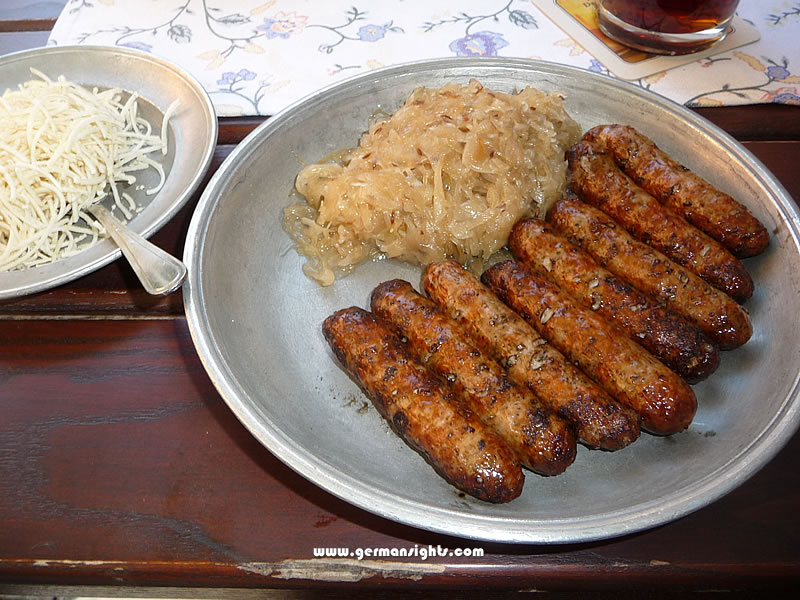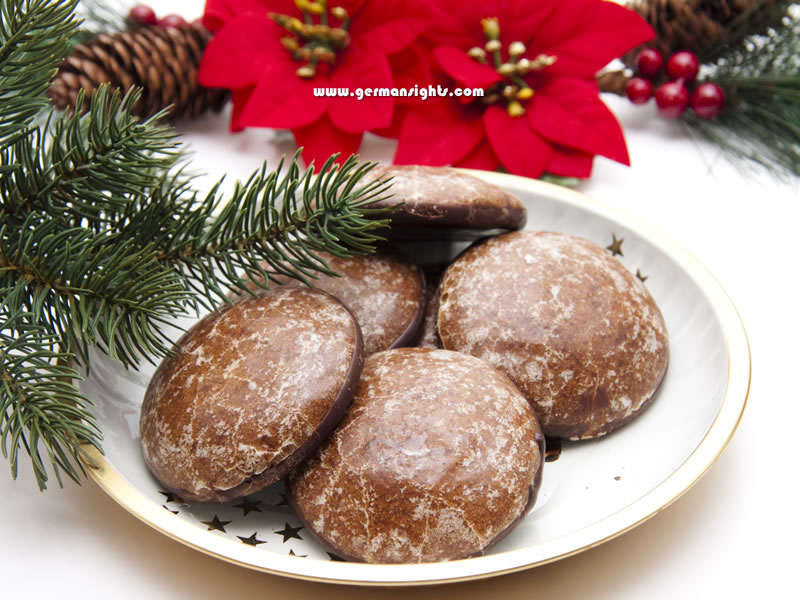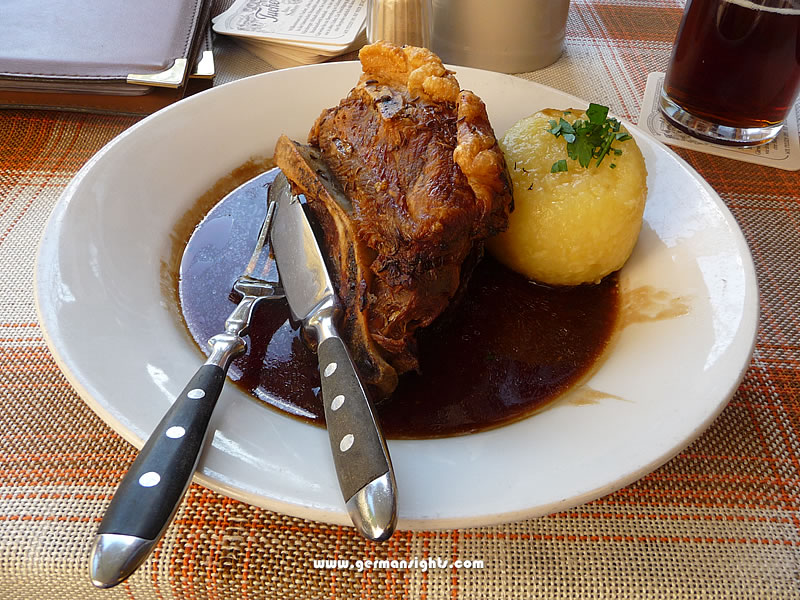Nuremberg was once the junction of many trade routes - and that meant that inhabitants became used to new spices and ways of cooking. Some of those dishes became Nuremberg's favourites and the city is now famous for a number of culinary treats:
Actually, in German the sausages are known as Nürnberger Bratwürste ('grilled sausages from Nuremberg') and this is what you should look for in a German food supermarket if you are aiming to take some back from the city.
The Nuremberg Bratwurst is a finger-length pork sausage spiced with marjoram, salt and pepper. The Nuremberg sausage is actually a protected European designation, meaning that only butchers from this area are allowed to market their wares using this title.
There are all kinds of tales about why the sausages are smaller than traditional German ones from other areas.
Local legends tell of innkeepers trying to beat the curfew or prisoners requesting their favourite sausage be pushed through small holes in the wall. The Nuremberg tourist office even suggests the more modern commercial solution of downsizing the sausage while keeping the price the same was the reason.
However they ended up looking the way they do, Nuremberg sausages are a 'street food' which should be on most visitors' lists to experience while here. There are sausage stands all over the city which grill them and serve them in a crusty bun (add your own mustard or ketchup if you wish). Ask for "drei im Weggla" ("three in a bun" in local dialect) when it is your turn at the counter.

Alternatively, you could go for a sit-down meal at a restaurant in Nuremberg old town which specialises in the sausages. Here they are traditionally served on a pewter plate, with sauerkraut and/or potato salad and/or fresh horseradish.
If you have tried a Nuremberg sausage before, one way of preparing them might be new to you. Locals also eat a version which is simmered with onions, wine, vinegar and juniper berries. If this sounds your kind of thing, look for "Saure Zipfel" on the menu.
The Lebkuchen from Nuremberg are a cookie of a type famous from Christmas markets all over the world and similar to gingerbread.
Nuremberg's Lebkuchen supposedly originate from the Franciscan monks in the area. They used ingredients from communion wafers to stop the sweet cookie ingredients sticking to the baking sheets.
The Lebkuchen can vary in taste depending on the baker but all include some of the spices which were common to see in Nuremberg in the Middle Ages: cloves, cinnamon, cardamon, aniseed, ginger, fennel and pepper.
Potassium carbonate (potash) or ammonium carbonate (hartshorn) were used to make the Lebkuchen rise.
They were also known as "honey cakes" or "pepper cakes" due to the taste and the ingredients used to make them. Because relatively little flour or fat was used to make them, they also lasted for longer than normal cakes or cookies.

In contrast to Lebkuchen in other cities, Nürnberger Lebkuchen tend to be circular and relatively soft. Traditionally they were often decorated with nuts or dried fruit, rather than icing - although modern times have led to a dilution of these traditional local preparations and Christmas market Lebkuchen (or "Lebzelten", as they are called in other areas) tend to have the same varieties wherever you go.
Lebkuchen from Nuremberg are also a protected European food designation, like the sausages above.
There is a form of local luxury Lebkuchen known as the Elisenkuchen. This sweet treat has strict limits on the amount of flour that can be used and minimum quantities (25%) of nuts. Supposedly these were made by a master Nuremberg baker for his daughter Elisabeth.
The Schäufele is not strictly of Nuremberg origin but it is a speciality from the area of Franconia and is a great local favourite appearing on menus all over the city.
Schäufele literally means 'little shovel' and refers to a slow-cooked piece of pork shoulder.
Traditionally, this is cut so that the meat rests on the section of shoulderblade and it is sliced so that there is a triangular piece of crackling on top.

Schäufele is browned and then slow-cooked in beer with caraway seeds. The meat should be falling off the bone, which the crackling should be dry and crispy.
Traditionally, it is served with a potato dumpling and sometimes additionally with sauerkraut or salad. It is similar, although much more manageable in portion size, to the Schweinshaxe ("knuckle of pork") or Kalbshaxe ("knuckle of veal") which is often seen in other parts of Bavaria.
Franconia is famous for its wine over towards the city of Würzburg, but Nuremberg is squarely in the heart of Franconian beer country.
The famous Bavarian beer purity laws were introduced in nearby neighbour Ingolstadt back in the Middle Ages and Bamberg to the north is famous for its smoky 'Rauchbier'.
Nuremberg has its own distinctive beer: a 'Rotbier' ('red beer') which is a bottom-fermented beer brewed slowly at cooler temperatures where the yeast falls to the bottom.
It is a type of 'amber lager' or 'Vienna lager', which means it has a malty, caramel-style taste and is darker (thus the 'red') in colour.
In the Middle Ages beer was stored in rock tunnels which had been carved out of the sandstone below Nuremberg castle. Nowadays it is possible to combine a walking tour of the cellars with a sampling of beer varieties from one of the local 'red beer' breweries.
Website: www.historische-felsengaenge.de